Originally published at Ascendix Tech's Blog.
Retaining competitiveness on the SaaS market is about careful budgeting and funding. But how can you be sure that your SaaS funding and spend amounts are aligned with your peers? Let’s take a look at the core SaaS statistics and find out:
- Global SaaS market size & the number of SaaS companies by region
- How SaaS companies are raising capital and what are their funding amounts
- How much do SaaS companies spend on marketing and other channels
SaaS Statistics 2022: Industry Size & Growth, Number of SaaS Companies and More
The SaaS industry is growing at a skyrocketing rate that took the global SaaS market size to an astonishing $272.49 billion (Statista), and this is just the beginning. With more than 25,000 companies worldwide in 2021, the SaaS market is projected to reach $307.3 billion by 2026.
The hottest SaaS market is the US (15,000 SaaS firms), followed by the UK (2,000 firms), Canada (1,000 firms), Germany (1,000 firms), France (939 firms), India (813 firms), and China (663 firms), as tracked by Statista.
The SaaS unicorns and decacorns are steadily picking up pace, with 337 and 15 representatives already present in the market, according to SaaStr. The numbers of SaaS unicorns and decacorns are projected to hit 1000 and 50 respectively in 2022.
Such intense SaaS industry growth is perhaps motivated by the increasing number of cloud services adopters. Just to illustrate, % of companies using SaaS to meet their software needs stood at 38 % in 2016 and 51 % in 2018. BlueTree projects the percentage of companies using only SaaS to touch 80 % in 2022.
How do SaaS Companies Raise Their Capital
As businesses shift to the cloud, the infrastructure of SaaS companies is steadily expanding welcoming more and more funding amounts for new SaaS projects.
Just imagine, the total amount of investment in 2020 landed at a record-breaking $48.5 billion distributed across 2,600+ companies globally. This is the new all-time high after the previous record of $43.6 billion raised in 2019, according to Pitchbook.
Well, SaaS funding amounts fly just as SaaS market size does, but where does this capital come from and what are the funding amounts raised at each stage?
To answer this question in the greatest detail, we referred to the renowned industry reporters, including but not limited to saasindustry.com, Statista, and 500 Global, and broke up all funding information into blocks according to funding source / stage / geography (Q1 of 2021).
How Much Pre-Seed Capital Did SaaS Companies Raise in Q1 of 2021
The Pre-Seed funds raised in the first quarter of 2021 (January, February, and March) stood at $8.8 million distributed across 40 SaaS startups. The biggest Saas funding amounts at this stage were $1,7 and $1,2 million, accumulated by the Germany-based Levity and the Denmark-headquartered Oveo.
Interesting fact: 5 out of 10 SaaS companies that got funded at the Seed stage are US-based.
How Much Seed Capital Did SaaS Companies Raise in Q1 of 2021
The picture seems to be even brighter when it comes to SaaS capital raised in the Seed Round. The total number of 115 SaaS companies raised capital worth a whopping $174 million if paired with the individual investments at this stage.
The US-headquartered Trace outreached other players, touching $8,3M led by Greylock and Uncork Capital.
How Much Series A, B, C Capital Did SaaS Companies Raise in Q1 of 2021
Across the A, B, C funding rounds, 124 SaaS companies raised a total of $3,3 billion, with almost $1.5 billion coming from round C alone. 68 startups raised 752M USD in Series A, and 29 companies touched just over 1B USD in Series B.
Interesting fact: the US is the ultimate leader when it comes to raising capital for SaaS, as 96 out of 124 companies are from the States.
Saas Budget: How Much Do SaaS Companies Spend on Marketing & Sales and Research & Development
When we found out how SaaS companies raise their capital, it’s time to outline how they spend their money.
SaaS Sales and Marketing spend:
- On average, SaaS firms pour 27% of their ARR into Marketing & Sales (M&S) rather than Research and Development (R&D).
- B2B SaaS Sales & Marketing budget can outreach a whopping 50% of a company’s annual revenue if paired with Customer Support expenses accounting for important milestones, like renewals, upsells, and cross-sells.
- Whereas the global Marketing spend continues to decrease, staying at 6.4% in 2020 (against 11% in 2019), according to Gartner, SaaS company marketing channels budget stays surprisingly solid (10%).
- SaaS Sales and Marketing spend peaks when a business reaches €1-€10M in ARR and starts building their sales process and marketing processes.
You might be wondering why so much attention is paid to M&S in SaaS. The reason is that the investment-based nature of the SaaS industry is pushing businesses to acquire recurring revenue and pay off the money spent on customer acquisition.
So, we believe that that in the highly competitive SaaS space, a safe estimate for business owners to invest in M&S goes from 10% to 40% of the company’s ARR (just like Wix and Smartsheet do).
SaaS spend on Research and Development:
- Younger businesses spend 30%-60% on R&D.
- This percentage inevitably drops once a company reaches €10 million in ARR.
- However, there is no one-fit-all strategy for all SaaS budgets. Just to illustrate, Slack, whose revenue in 2016 stood at $105 million, spent 59% of revenue on R&D.
Final Thoughts
That said, you’re to decide where to pour your money, but before you plan your budget ahead, we recommend you outline your company’s nature – is it product-driven and sales-driven?
If you want to focus on M&S as your predominant initiative, it’d be wise to follow Slack’s budget model. Otherwise, you should first invest in the quality and functionality of your products to guarantee their competitiveness on the market. After that, start building your sales process and expand your sales and marketing teams by porting more funds into the M&S efforts.
If you want to learn more, please check the full blog post Software as a Service Statistics: Raising capital, Spend, and Other Numbers.



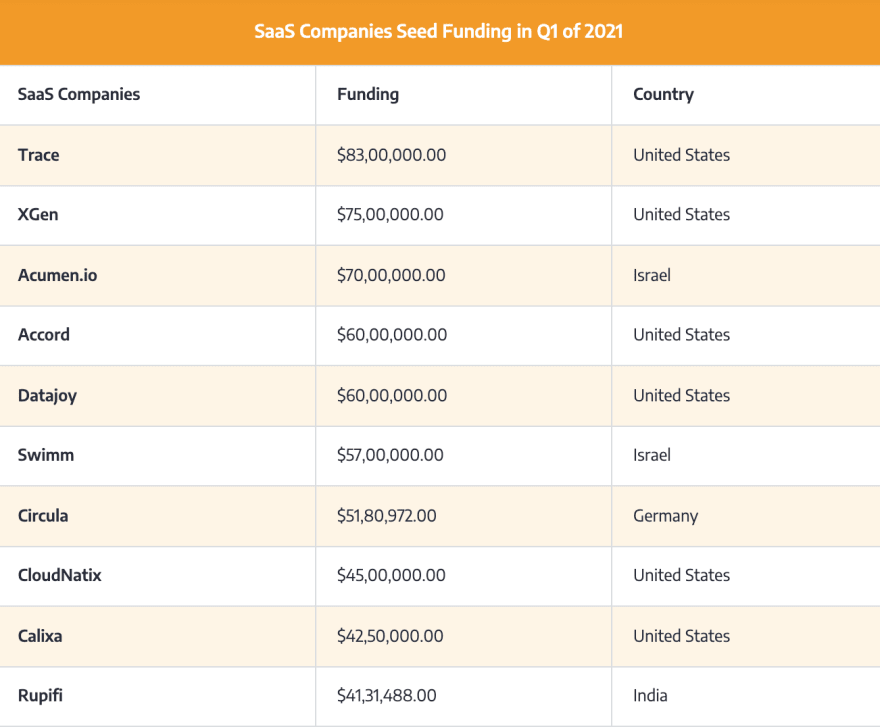

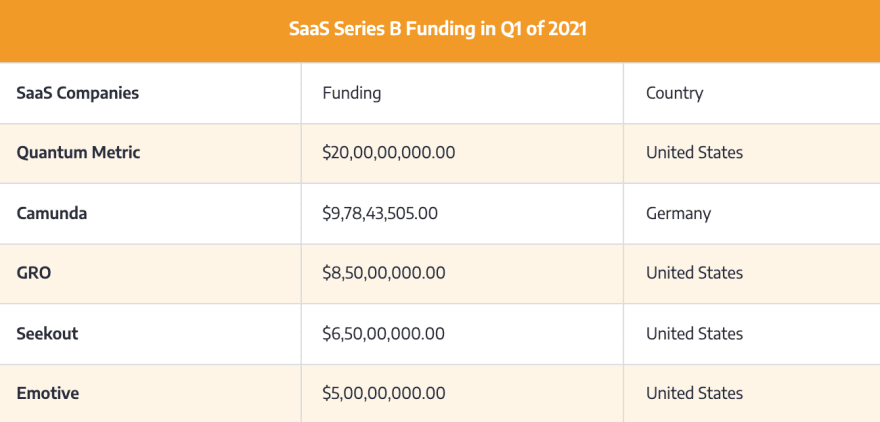
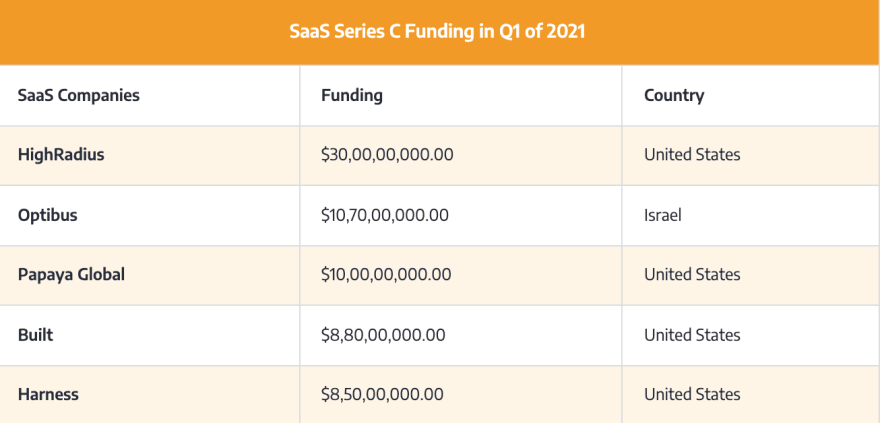
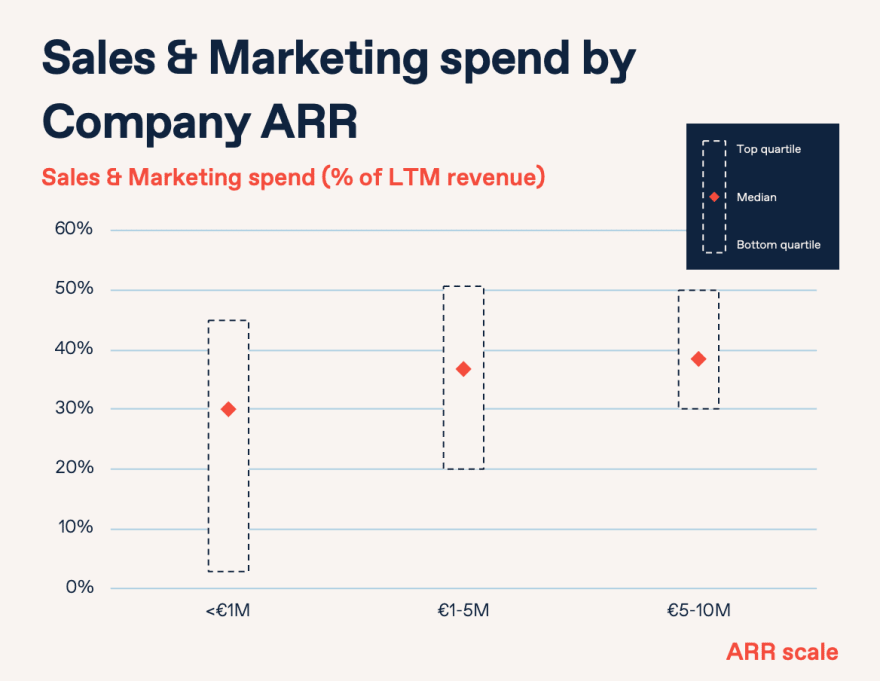
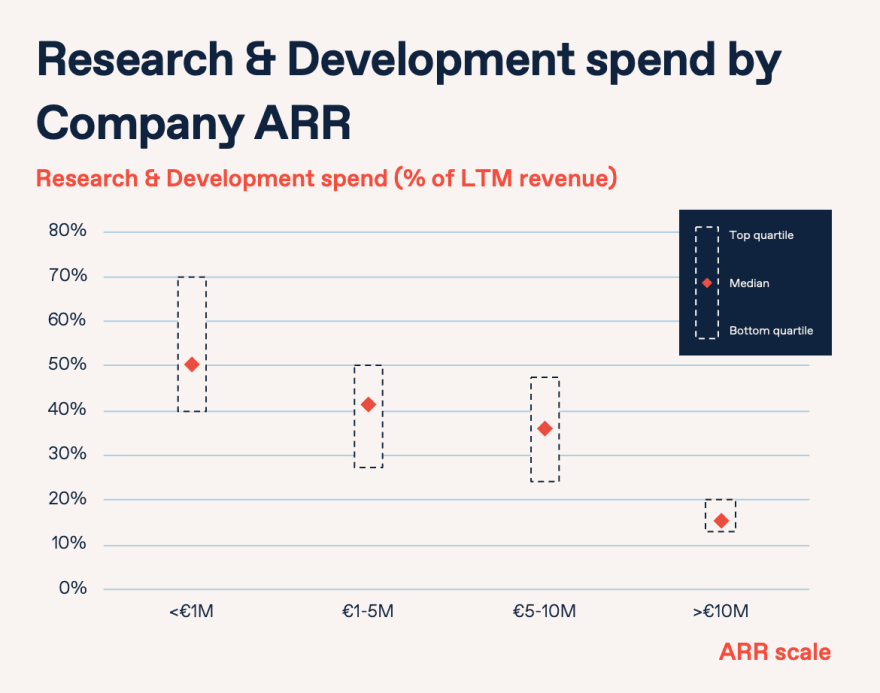

Top comments (0)